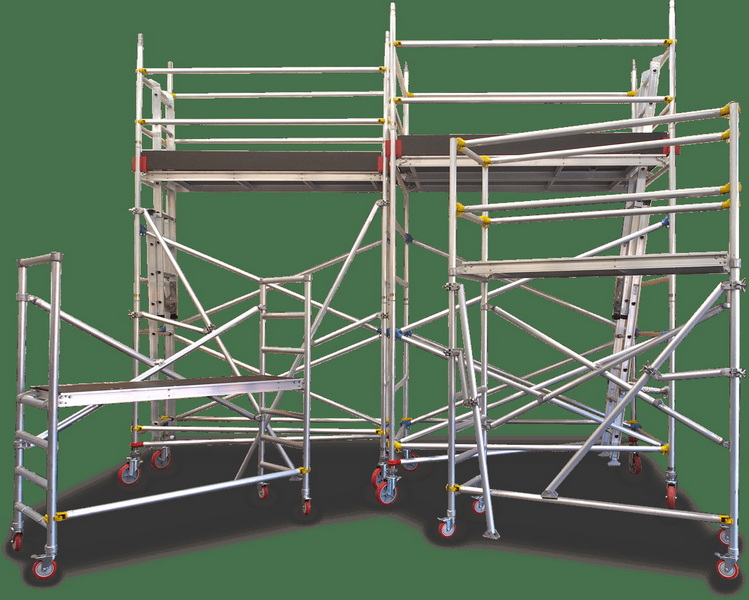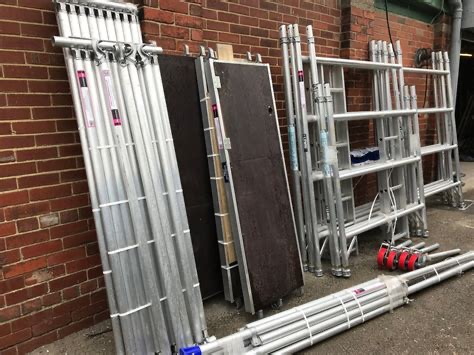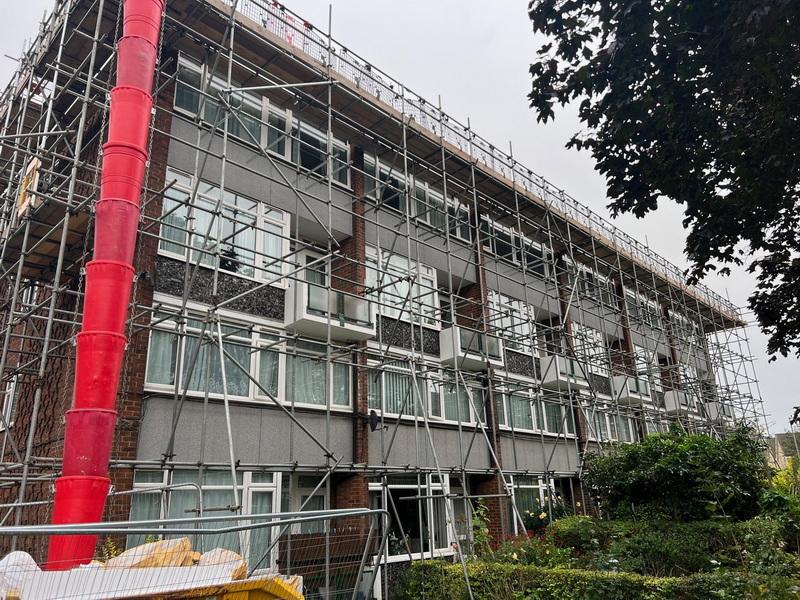Content Menu
● Key Factors Affecting Aluminum Scaffolding Price
>> Material Quality and Grade
>> Scaffolding Type and Design Complexity
>> Height and Coverage Area
>> Labor and Installation Costs
>> Project Duration and Rental Period
>> Location and Accessibility
>> Customization and Additional Features
● Additional Cost Considerations
>> Transportation and Logistics
>> Storage and Maintenance
>> Insurance and Permits
● Comparing Aluminum Scaffolding Price to Other Materials
● Aluminum Scaffolding Components and Pricing
● Conclusion
● FAQ
>> 1. What are the main factors that affect aluminum scaffolding price?
>> 2. Is aluminum scaffolding more expensive than steel scaffolding?
>> 3. How does project duration impact aluminum scaffolding price?
>> 4. Can customization increase the price of aluminum scaffolding?
>> 5. How does location affect aluminum scaffolding price?
Aluminum scaffolding has become increasingly favored in construction due to its lightweight, corrosion resistance, and ease of handling. However, the aluminum scaffolding price is influenced by a variety of factors that go beyond just the raw material cost. From design complexity to labor rates and rental duration, each aspect plays a role in shaping the final cost. This article breaks down these factors in detail to help you make informed purchasing or rental decisions.

Key Factors Affecting Aluminum Scaffolding Price
Material Quality and Grade
The base material quality is one of the most significant determinants of aluminum scaffolding price. Most scaffolding is made from aluminum alloys such as 6061-T6, prized for its strength-to-weight ratio and corrosion resistance. Higher-grade alloys or thicker tubing increase durability but also raise costs.
- High-grade aluminum alloys command premium prices due to enhanced strength and longevity.
- Lower-grade materials may reduce upfront costs but can compromise safety and lifespan.
Scaffolding Type and Design Complexity
The design and type of scaffolding system significantly impact the price:
- Frame Scaffolding: Simple design, generally more affordable.
- System/Modular Scaffolding: Offers flexibility and adaptability but at a higher cost.
- Suspended Scaffolding: Specialized equipment with higher installation and rental fees.
- Custom Designs: For unique architectural features or difficult access, custom scaffolding can increase costs substantially.
Complex scaffolding requires skilled labor and additional components, driving the aluminum scaffolding price upward.
Height and Coverage Area
The height and total area covered by the scaffolding directly affect material quantities and thus cost:
- Taller scaffolding needs longer standards and more braces.
- Larger coverage areas require more ledgers, platforms, and base plates.
- Safety regulations may require additional components at greater heights, increasing costs.
For example, a 10-meter high scaffold covering 100 square meters will cost significantly more than a 3-meter scaffold covering 20 square meters.
Labor and Installation Costs
Labor costs can be a major part of the total aluminum scaffolding price. Factors include:
- Complexity of assembly: More intricate scaffolding requires skilled workers and more time.
- Local labor rates: Vary by region and can fluctuate with demand.
- Safety requirements: Additional safety measures or inspections add to labor costs.
Because aluminum scaffolding is lighter, it often reduces labor time compared to steel, potentially lowering labor costs despite a higher material price.
Project Duration and Rental Period
For rental scaffolding, the length of time the scaffold is needed influences the price:
- Longer rental periods increase total cost.
- Some suppliers offer discounts for extended rentals.
- Storage and maintenance fees may apply if scaffolding remains unused on-site.
Purchasing scaffolding outright avoids rental fees but requires larger upfront investment.
Location and Accessibility
The project's location affects transportation, delivery, and installation costs:
- Remote or difficult-to-access sites increase logistics expenses.
- Urban areas with traffic restrictions may require special permits or timing.
- Weather conditions can affect installation speed and safety, influencing labor costs.
These factors can cause fluctuations in the aluminum scaffolding price even for similar-sized projects.
Customization and Additional Features
Additional features and customization options also affect pricing:
- Non-slip platforms, guardrails, and toe boards enhance safety but add cost.
- Casters for mobility increase versatility and price.
- Special coatings or finishes for chemical resistance or aesthetics raise material costs.
- Integrated ladders or stairways improve access but add complexity and expense.
Choosing the right balance of features for your project can optimize safety and cost-efficiency.

Additional Cost Considerations
Transportation and Logistics
Transporting aluminum scaffolding parts to the job site can add to the overall price, especially if the site is remote or difficult to access. The lightweight nature of aluminum reduces transportation costs compared to steel scaffolding, but factors such as:
- Freight charges
- Handling fees
- Special equipment for loading/unloading
all contribute to the final aluminum scaffolding price.
Storage and Maintenance
If scaffolding is stored for long periods before or after use, storage costs may apply. Aluminum scaffolding requires less maintenance than steel due to its corrosion resistance, but regular inspections and cleaning are still necessary to maintain safety and prolong lifespan.
Insurance and Permits
Some regions require permits for scaffolding erection, which can add to project costs. Insurance premiums may also be higher depending on the height and complexity of the scaffolding system.
Comparing Aluminum Scaffolding Price to Other Materials
Aluminum scaffolding is often compared with steel scaffolding in terms of price and performance:
| Feature | Aluminum Scaffolding Price | Steel Scaffolding Price |
| Initial Material Cost | Higher | Lower |
| Labor Cost | Lower (lighter, easier) | Higher (heavier) |
| Maintenance Cost | Lower (corrosion resistant) | Higher (rust treatment) |
| Durability | Good for light to medium use | Excellent for heavy use |
| Total Cost of Ownership | Competitive over time | Potentially higher due to maintenance |
While aluminum scaffolding typically has a higher upfront price, its reduced labor and maintenance costs often make it more economical over the project lifecycle.
Aluminum Scaffolding Components and Pricing
Below is an illustrative breakdown of typical aluminum scaffolding parts and their approximate contribution to the overall price:
| Component | Description | Approximate Cost Contribution |
| Standards | Vertical support tubes | 30-40% |
| Ledgers | Horizontal connectors | 20-25% |
| Braces | Diagonal stabilizers | 10-15% |
| Platforms | Working surfaces | 15-20% |
| Casters | Wheels for mobility | 5-10% |
| Base Plates | Load distribution plates | 5-10% |
| Couplers | Connectors and fasteners | 5-10% |
Conclusion
The aluminum scaffolding price is influenced by a complex interplay of factors including material quality, scaffolding type, height, labor costs, project duration, location, and customization. While aluminum scaffolding often carries a higher upfront price compared to steel, its advantages in portability, corrosion resistance, and reduced labor can make it a more cost-effective solution over time. Understanding these cost drivers enables project managers and contractors to budget accurately and select scaffolding systems that best meet their project needs.

FAQ
1. What are the main factors that affect aluminum scaffolding price?
The main factors include material quality, scaffolding type and complexity, height and coverage area, labor and installation costs, project duration, location, and customization features.
2. Is aluminum scaffolding more expensive than steel scaffolding?
Aluminum scaffolding typically has a higher initial price but can save money on labor and maintenance costs, making it competitive over the project lifecycle.
3. How does project duration impact aluminum scaffolding price?
Longer rental or usage periods increase the total cost. Some suppliers offer discounts for extended rentals, but overall, longer projects mean higher expenses.
4. Can customization increase the price of aluminum scaffolding?
Yes, additional safety features, mobility options, and special finishes raise the cost but can improve safety and efficiency.
5. How does location affect aluminum scaffolding price?
Remote or hard-to-access sites increase transportation and labor costs, affecting the overall price.






















